BRIEF HISTORY - 1824-2005
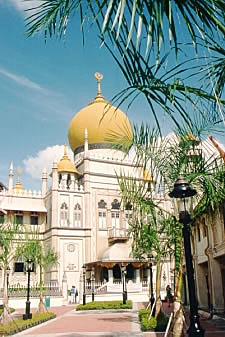 SULTAN
MOSQUE holds dearly to the
hearts of all Singapore Muslims. It is a premier mosque in Singapore and
considered ‘de facto’ by the Muslims as the ‘grand national’
mosque. Backed by a history of 178 years it has lived through the
transformation of Singapore from tiny fishing villages spotted in Telok
Blangah (now World Trade Centre), Kampong Melaka along west bank of
Singapore river and Kampung Glam on the bank of Rochore river, into a
cosmopolitan city state of the Republic of Singapore.
SULTAN
MOSQUE holds dearly to the
hearts of all Singapore Muslims. It is a premier mosque in Singapore and
considered ‘de facto’ by the Muslims as the ‘grand national’
mosque. Backed by a history of 178 years it has lived through the
transformation of Singapore from tiny fishing villages spotted in Telok
Blangah (now World Trade Centre), Kampong Melaka along west bank of
Singapore river and Kampung Glam on the bank of Rochore river, into a
cosmopolitan city state of the Republic of Singapore.
In 1819 when Sir Stamford Raffles landed on this island
Temasek (former name of Singapore), there was a community of estimated
1,000 ethnic Malays known as Orang Laut (fishermen) living on the
Singapore River. By 1824 the inhabitants stood at nearly 11,000, with
Malays being the largest community, followed by the Chinese and Bugis.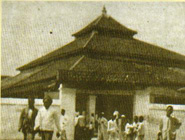
In 1824 Sultan Hussain Shah, the ruler of Temasek desired to build a mosque within the palace ground of Istana Kampung Glam. Sir Stamford Raffles with the help of East India Company donated $3,000 for the construction of the mosque. It was a brick structure with tiered roof in the shape of a truncated pyramid was modeled from those mosques found in Indonesia and it was ready to use in 1828.
.
In 1879 Sultan Alauddin Alam Shah, the grandson and successor of Sultan Hussain Shah handed over the administration of the mosque to a Board of Trustees comprising five Muslim leaders namely Dawood bin Hj. Hassan, Hj Hamzah bin Hj Mansoor, Hj. Mohamed Ally bin Hj Mohamad Said, Mohamed Ally bin Shaik Bawah and Hj Bawasah. They were successful businessmen and leaders in this area known to be the first town center of commercial activities.
Part of the land on which the original mosque was built was conveyed by Sultan Alauddin Alam Shah to the trustees on 16 October 1879. Another part of the land nearby was also conveyed by an indenture dated 20th April 1879 by Tunku Aleemah to the trustees.
By 1900, Singapore’s population was 230,000 due to its growth as a thriving trading hub of the Malay Archipelago. The Malay-Muslim population stood at more than 36,000 then and mostly concentrated in the Kampung Glam area. The widespread of commercial, cultural and religious activities closely related to Malay-Muslim lifestyles makes its imperative for the Muslims to have an Islamic centre and undoubtedly Sultan Mosque was the unanimous choice. The trustees tabled their ambitious plan to the colonial administrator to realise this Islamic center concept.
In April 1914 a trust deed was created where a new Board of Trustees was constituted stipulating that six ethnic groups must be represented in its Board. Those appointed initially were Syed Abrulrahman b Shaik Alkaff and Shaik Abu Baker b Taha Mattar (Arab); Inche Amboo' Haji Kamaruddin and Saim b Abdul Malek (Bugis); Hj Wan Abdullah b Omar and A Jalil bin Hj Haroon (Malay); Hj Mohamed Amin b Abdullah and Hj Mohamed Eusofe Hj Mohamed Noor (Javanese); Mahmood bin Hadjee Dawood and Mohamed b Mahmood Sahab (North Indian) and Mohamed Kassim Marican and Yavena Sultan Abdulcader (Tamil). This legacy has been maintained until today with the consent of Islamic Religious Council of Singapore, the statutory body responsible for all the Muslim affairs in Singapore.
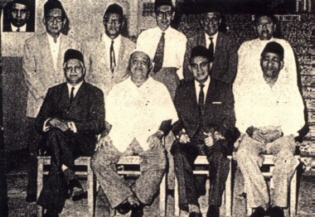
Some of the Trustees of 1960s
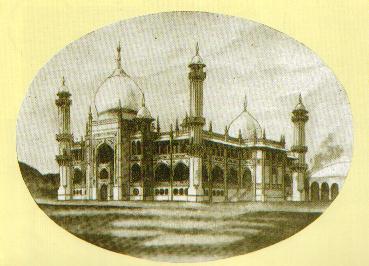 1924
The Trustees rolled out their plan to
rebuild a new mosque building on the same site. They raised SGD$200,000.00
and started construction in phases so as not to disrupt the prayers in the
mosque. British firm Swan & Maclaren designed the building in
Saracenic style, which combined the diverse heritage of Indian and Islamic
architecture with British standards of utility and modernity. With an area
of more than 4,000 square meters the two-storey mosque became the pride
possession of the Muslim community in Singapore until today.
1924
The Trustees rolled out their plan to
rebuild a new mosque building on the same site. They raised SGD$200,000.00
and started construction in phases so as not to disrupt the prayers in the
mosque. British firm Swan & Maclaren designed the building in
Saracenic style, which combined the diverse heritage of Indian and Islamic
architecture with British standards of utility and modernity. With an area
of more than 4,000 square meters the two-storey mosque became the pride
possession of the Muslim community in Singapore until today.
As Singapore evolves into a cosmopolitan city-state on a land-scarce island, some old mosques were redeveloped and new ones were built to meet their changing roles and demands. In 1971 the government facilitated a mosque building fund scheme in which every working Muslim will contribute between $3 to $5 monthly to the cost of building new mosques. There are now 23 new-generation mosques under this scheme making a total of 69 mosques in Singapore. Besides the primary religious function, the new generation mosques are also service providing centres for education, social, cultural and family needs of the Muslims.
1975 Masjid Sultan was declared by the Government of Singapore a national heritage and preserved building under the patronage of the Preservation of Monuments Board. By operation of the Administration of Muslims Law Act 1968, the mosque became vested in the Islamic Religious Council of Singapore (MUIS) who also overseas all its management and administration.

The desire was conveyed to Mr. Goh Chok Tong (then Minister of Health) during his walkabout and visit to the mosque. The whole Muslim community rejoiced when the government announced acceptance of the proposal. Dr. Ahmad Mattar (the Minister in-charge of Muslim Affairs) and the Trustees seriously took the task and finally with a cost of SGD$4.2 million upgraded the infrastructure of the mosque with an Annex Building on the 1,000 sq. meters adjacent land. which included an auditorium, multi-purpose hall, classrooms and meeting rooms.
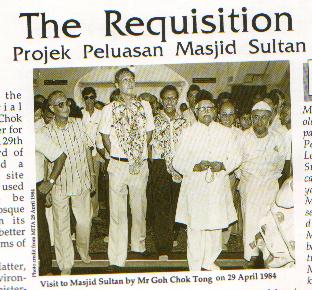
10th
July 1993,, Prime Minister Goh Chok Tong was given the honour to
officiate the opening of the Annex Building. It houses an auditorium,
multi-purpose hall, classrooms and meeting rooms. Evidently with all the
activities now organized and running at the Annex Building, Masjid Sultan
has fulfilled its promise to contribute toward the harmonious living of
our plural society of Singapore.
2005 The Repair and Renovation of the mosque was a cyclical task which the Trustees dutifully undertook to maintain its monumental status. Besides painting, plumbing and carpentery repairs, significant upgradings were done since 1968 to make Masjid Sultan be what it is today. In 1968 the screte floor was carpeted and the wall was tiled. The Government of the Kingdom of Saudi Arabia in three major Renovation and Repair (1968, 1985 and 1993) has donated the entire carpet lain in the prayer hall. In 1985 better lightings and fans were added and water proofing the roof was the major overhaul. In 1993, the Annex Building came into being. In 2001 chandeliers of similar designed to the Holy Mosque in Mecca were imported to enhance the ambience of the prayer hall. In 2003 the courtyard and the compound of the mosque were levelled up after soil settlement was traced to be the cause of some structural defects to the linked ablution section. In all these upgrading works, the Muslim community of Singapore rallied to donate generously towards the costs which were met satisfactorily without incurring debts.
.